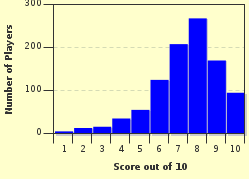Quiz Answer Key and Fun Facts
1. What is the maximum number of overs a bowler can bowl in T-20 cricket?
2. A new concept in T-20 cricket is that of the football style bowl-out. When is a bowl-out resorted to?
3. Another new concept of T-20 cricket is the free-hit, wherein a batsman gets a chance to have a free hit at the ball knowing that he cannot be given out. When does the free-hit come into play?
4. The powerplay is the fielding restrictions in a one day match, when not more than 2 fielders are allowed outside the 30 yard circle. In a T-20 match, how many overs of powerplay is allowed?
5. A bowler bowls a fast full toss (beamer) at the batsman which misses his head, this is immediately called as a no-ball by the umpire. The batsman gets a free hit the next delivery.
6. How long is the duration of one innings of a T-20 match?
7. In T-20 cricket, how many bouncers are allowed in any over?
8. How many drink breaks are allowed in a T-20 innings?
9. Why do batsmen in T-20 matches sit close to the boundary, instead of sitting in the dressing room?
10. In T-20 cricket, a batsman is not allowed to bat after scoring a century. After scoring 100, the batsman has to retire.
Source: Author
deepakmr
This quiz was reviewed by FunTrivia editor
Nightmare before going online.
Any errors found in FunTrivia content are routinely corrected through our feedback system.

